[Weekender] Qatar opens up path for next generation with art
By Park YunaPublished : March 23, 2024 - 09:02
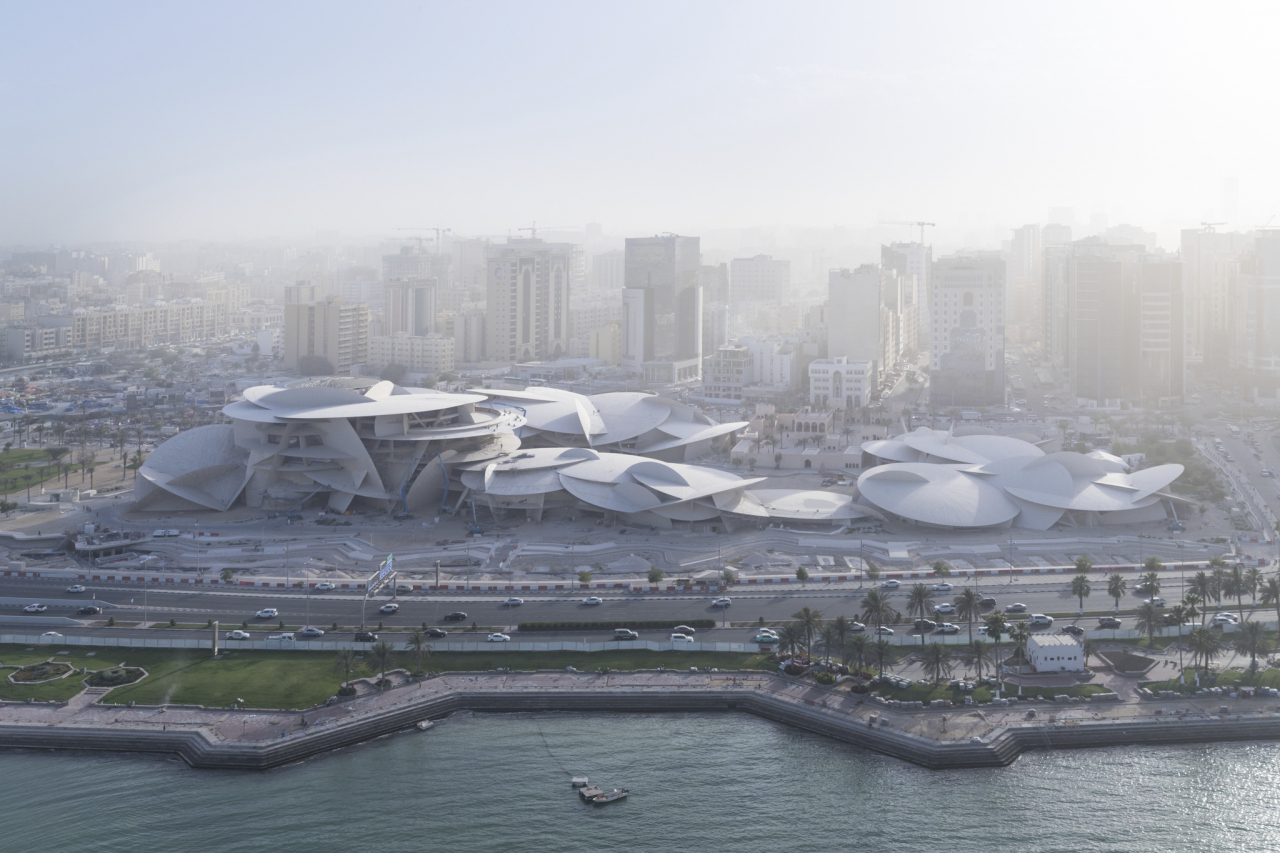
DOHA, Qatar -- As you near the National Museum of Qatar in Doha, a large-scale layered structure comes into sight. The museum, designed by French architect Jean Nouvel, is reminiscent of the “desert rose,” a crystal cluster of gypsum formed in the desert that indicates the presence of water.
The museum, which opened in 2019, presents the story of Qatar from prehistoric times to the present, and also houses contemporary art collections that include some of the world’s most renowned artists. Swiss artist Pipilotti Rist's commissioned site-specific installation “Your Brain to Me, My Brain to You” is on display.
The Qatar Peninsula -- stretching from the seemingly boundless sands of Arabia to the waters of the Gulf -- has been home to countless animals and plants, including hardy desert plants. Qatari people moved freely between the land and the sea -- herding, hunting, trading and pearling. After oil was discovered in 1939 on the west coast, the country prospered economically while the pearling business slowly diminished.
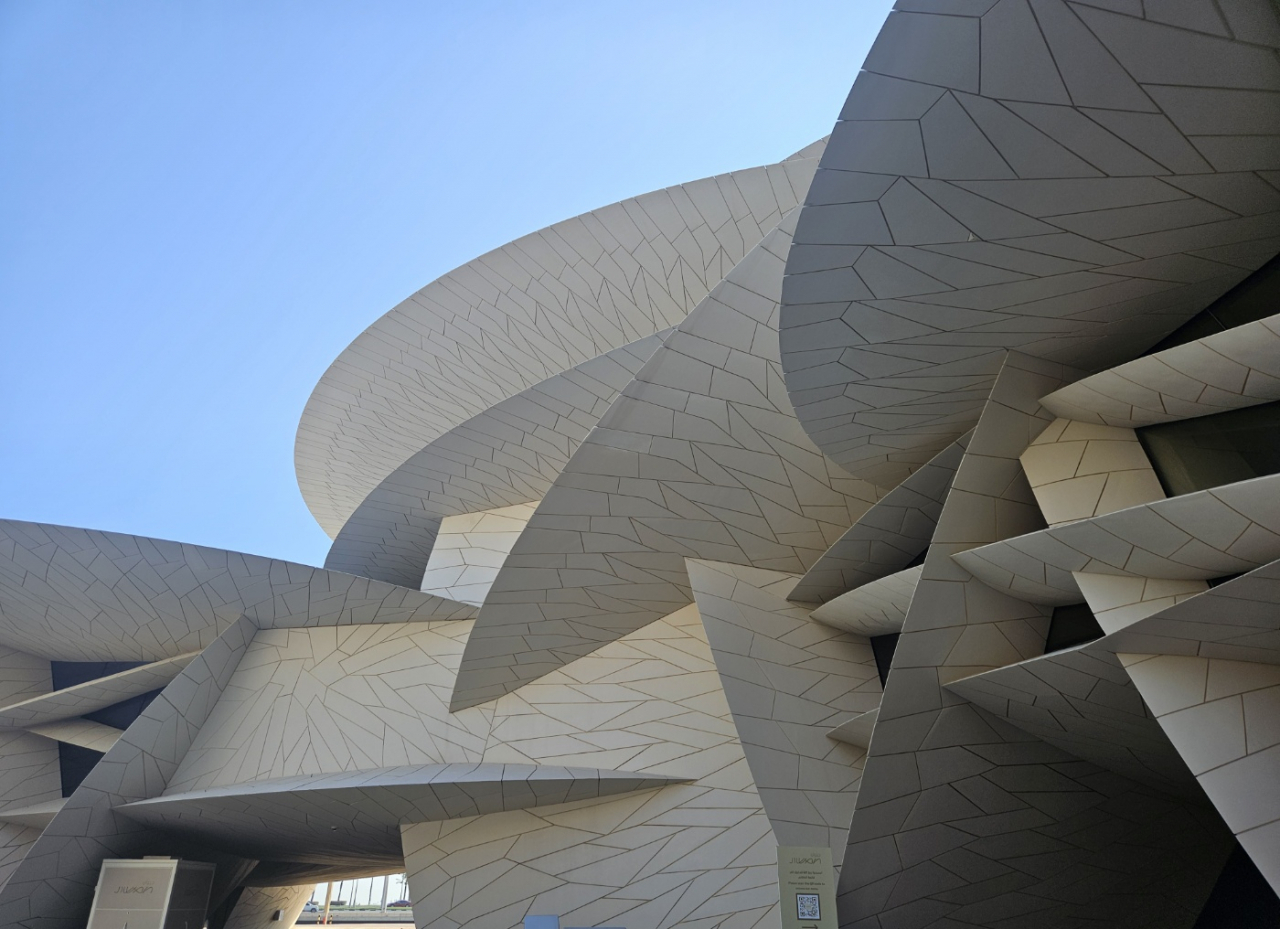
With a population of 3 million people, the country has poured its efforts into growing its cultural scene over the years, led by al-Mayassa bint Hamad Bin Khalifa Al Thani, who serves as chairperson of Qatar Museums and is the daughter of Qatar’s former ruling emir, Hamad bin Khalifa Al Thani.
“Although people often think of Qatar as a 51-year-old nation -- which is when it ceased being a protectorate (of Great Britain) -- it is, in fact, an ancient territory that was never colonized. … People often mistakenly believe that the Gulf and Arab countries have a single identity. The reality is that each has its own vision for development,” she wrote in her 2022 book “The Power of Culture.”

Designed by Dutch architect Rem Koolhaas, the Qatar National Library in Doha opened its doors in 2018, becoming a landmark in the capital's Education City. Upon entering the library, visitors are greeted by an expansive collection of books as light beams through the windows.
“I was instructed in the beginning that the library had to stimulate reading. … That basically suggested to me that I should try to make a building where you enter without many preliminaries, and that once you enter, you are exposed to the entire richness of the books that surround you,” the architect said in a podcast conversation with al-Mayassa bint Hamad Bin Khalifa Al-Thani.
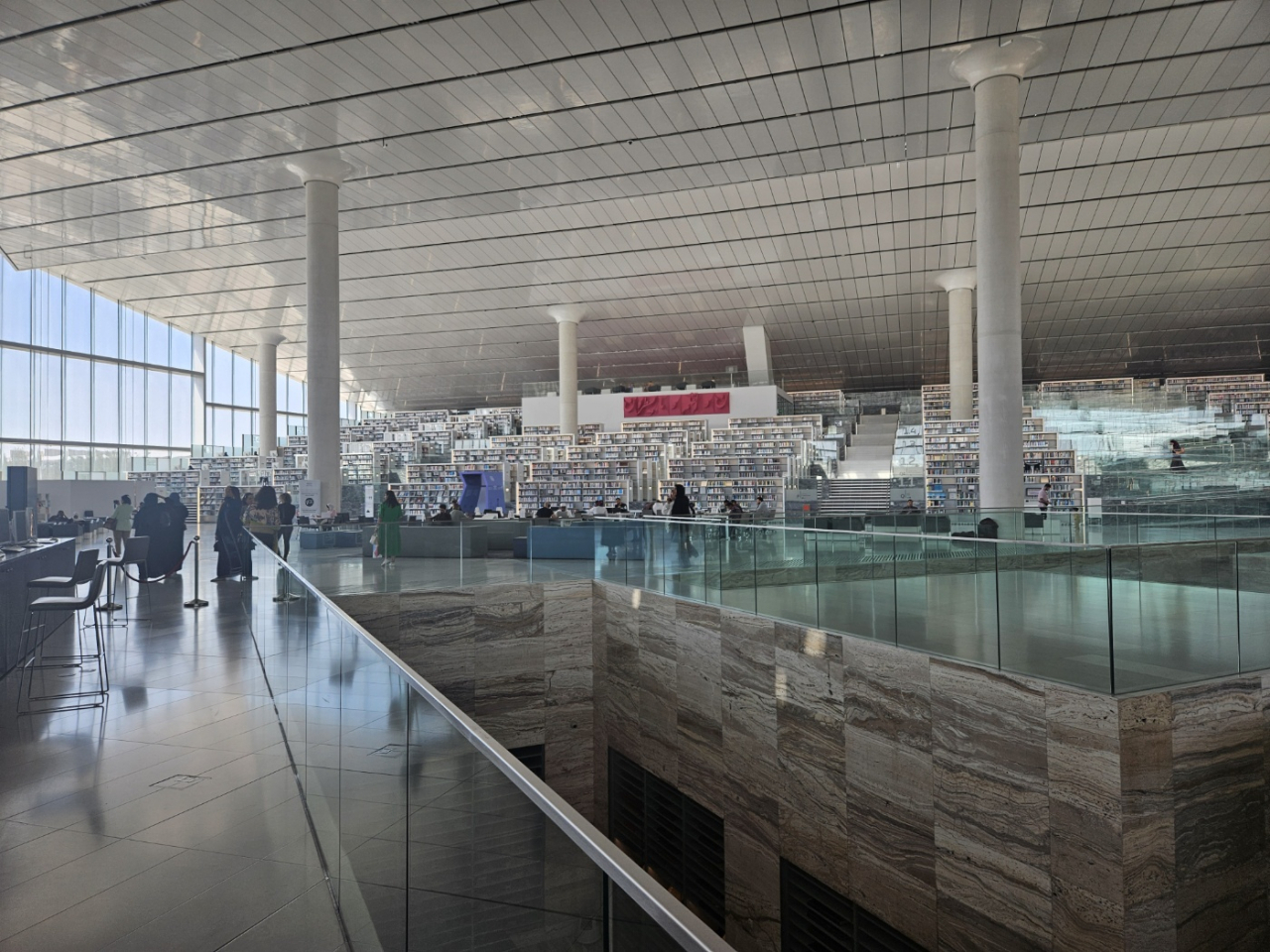
For those interested in learning about Islamic art and Arabic culture, there are two unmissable museums to explore in the city: The Museum of Islamic Art and the Mathaf Arab Museum of Modern Art, established in 2008 and 2010, respectively.
At the Mathaf Arab Museum of Modern Art, the exhibition “Abstraction in Arab Modernism” is on view, introducing details of how the Arabic language has inspired many artists in West Asia and North Africa. The museum in Education City was named the Middle East’s “Best Emerging Culture Destination” at the 2015 Leading Culture Destinations Awards held in London, according to the museum.
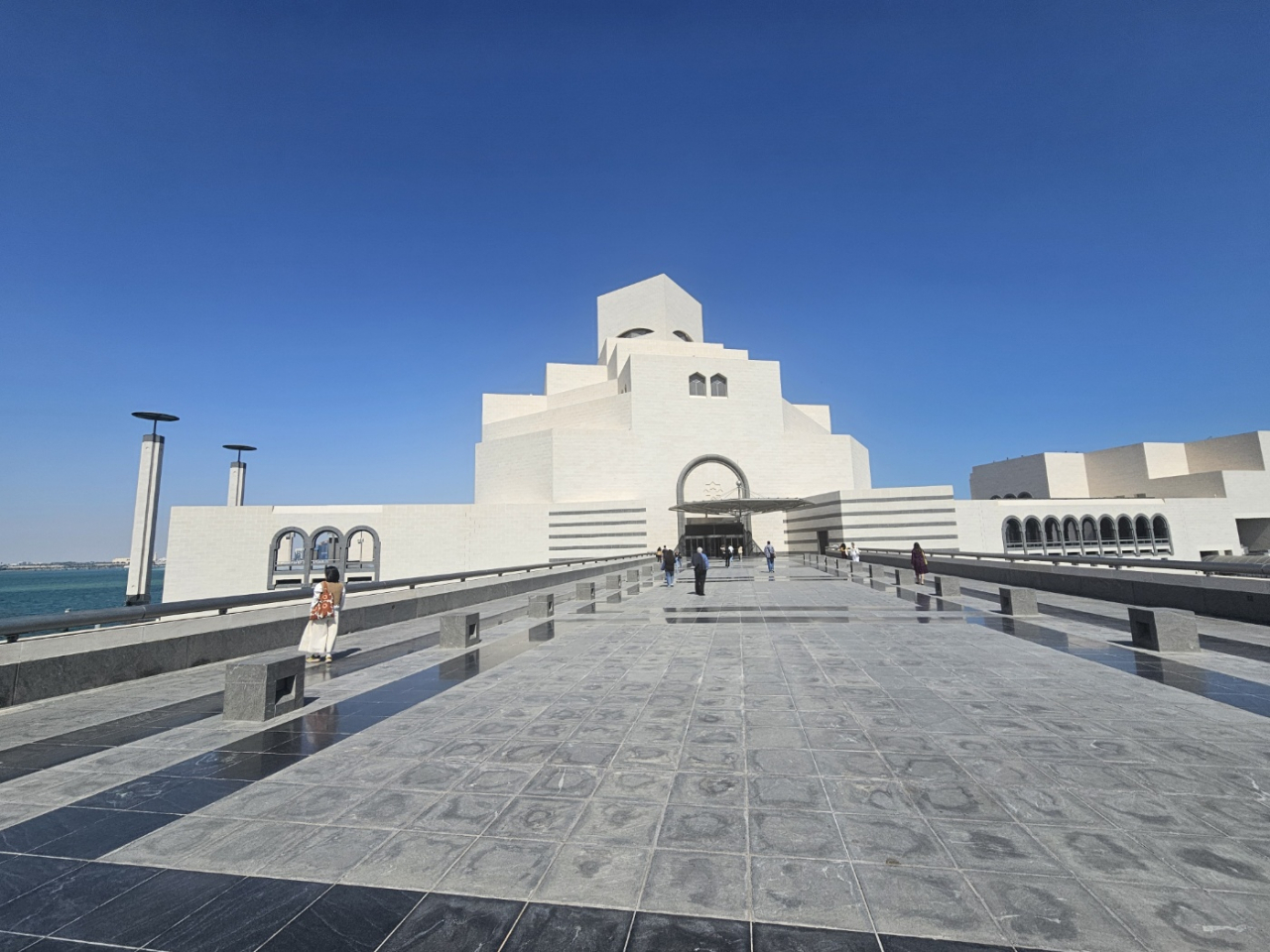
The Museum of Islamic Art, the first large-scale museum in the region, designed by Chinese American architect I. M. Pei, is located on an artificial peninsula overlooking the south end of Doha Bay. “Fashioning an Empire: Textiles From Safavid Iran” showcases the critical role that silk played during Iran’s Safavid period (1501-1736). The MIA Cafe, located in the lobby, is one of the most visited destinations among travelers for its scenic views of Doha Bay.
Adjacent to the Museum of Islamic Art, the QM Gallery Al Riwaq is a 5,000-square-meter exhibition space for hosting major exhibitions of international and regional artists organized by Qatar Museums. The “Dan Flavin/Donald Judd: Doha” exhibition, curated by the Los Angeles County Museum of Art, sheds light on the artists’ shared engagement with material, color and form.
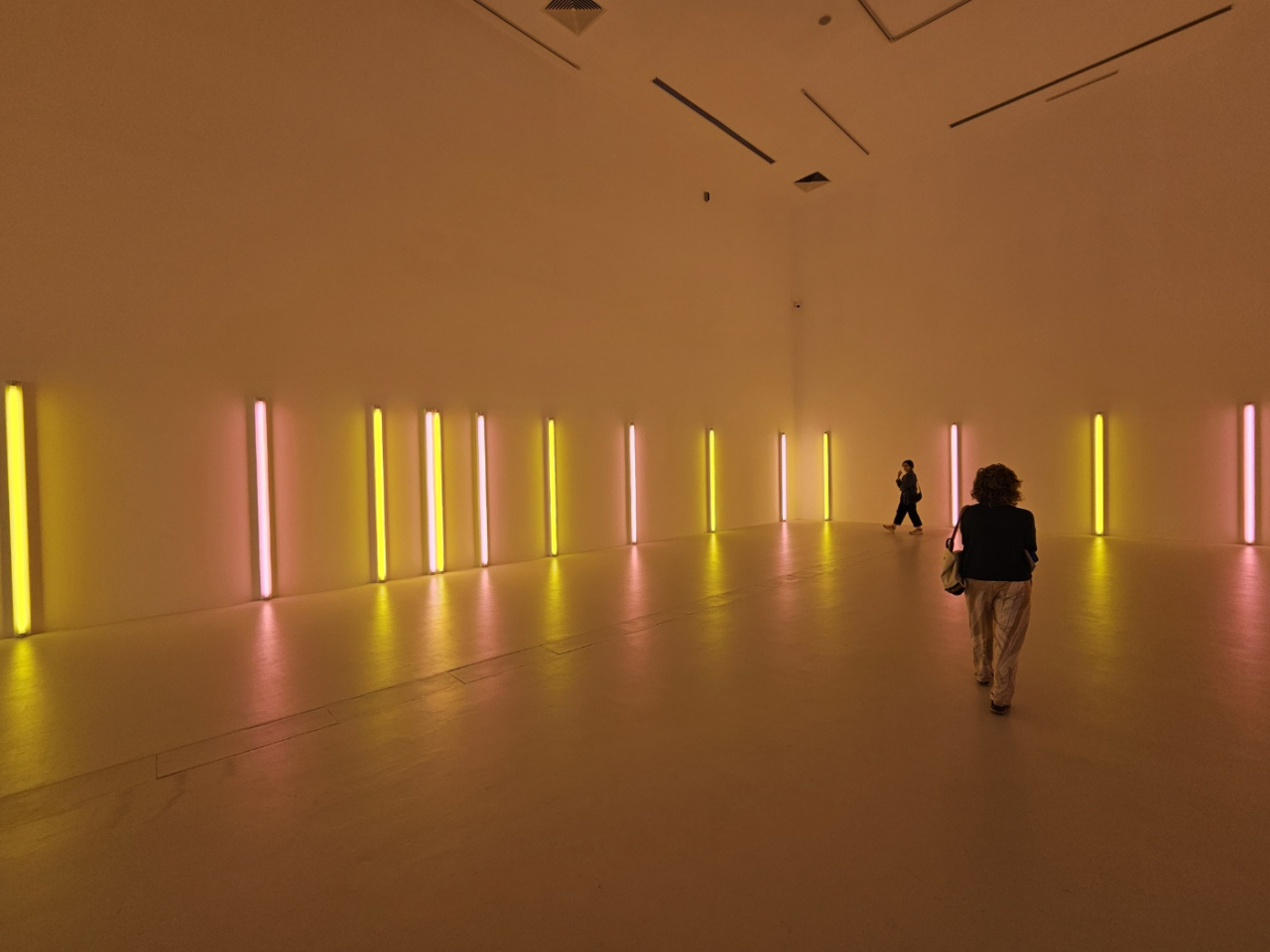
In an effort to make art a part of everyday life, Qatar became one of the first countries in the Gulf to introduce a contemporary public art program. To date, the program has grown to encompass some 70 works by more than 60 artists from Qatar and around the world, according to Qatar Museums.
Sometimes the desert in Qatar itself transforms into a space for artwork. American Richard Serra is one of the artists whose works have been introduced in Qatar through the public art program. His magnificent sculpture, “East-West/West-East,” spans over a kilometer, comprising four steel plates, each over 14 meters tall in the heart of the Qatari desert.
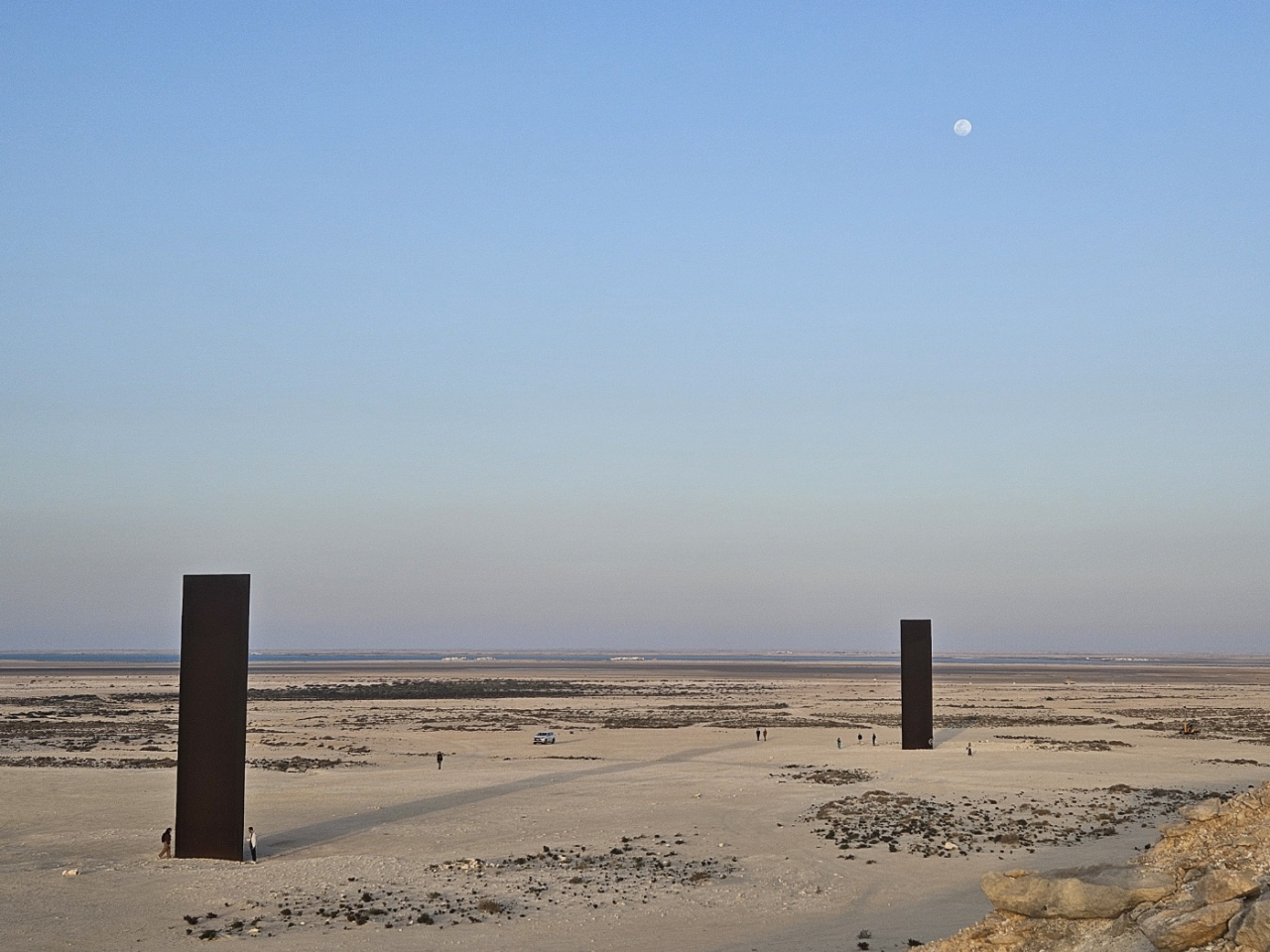
“This is the most fulfilling thing I have ever done. It is a piece that I would really like to be seen,” the artist once said about the work.
In the sunset, the sun and moon can be seen at the same time facing each other across the installation, giving a sense of awe to visitors.
Another site-specific installation in the Qatari desert north of Al Zubarah -- an ancient town about 100 kilometers from the capital Doha -- is the work of Icelandic Danish artist Olafur Eliasson.
The installation work, “Shadows Traveling on the Sea of the Day,” was created in 2022 and comprises 20 circular shelters, three single rings and two double rings. The large-scale installation creates a visual illusion of the pipes doubling into full rings, linking the real landscape with the reflected space.
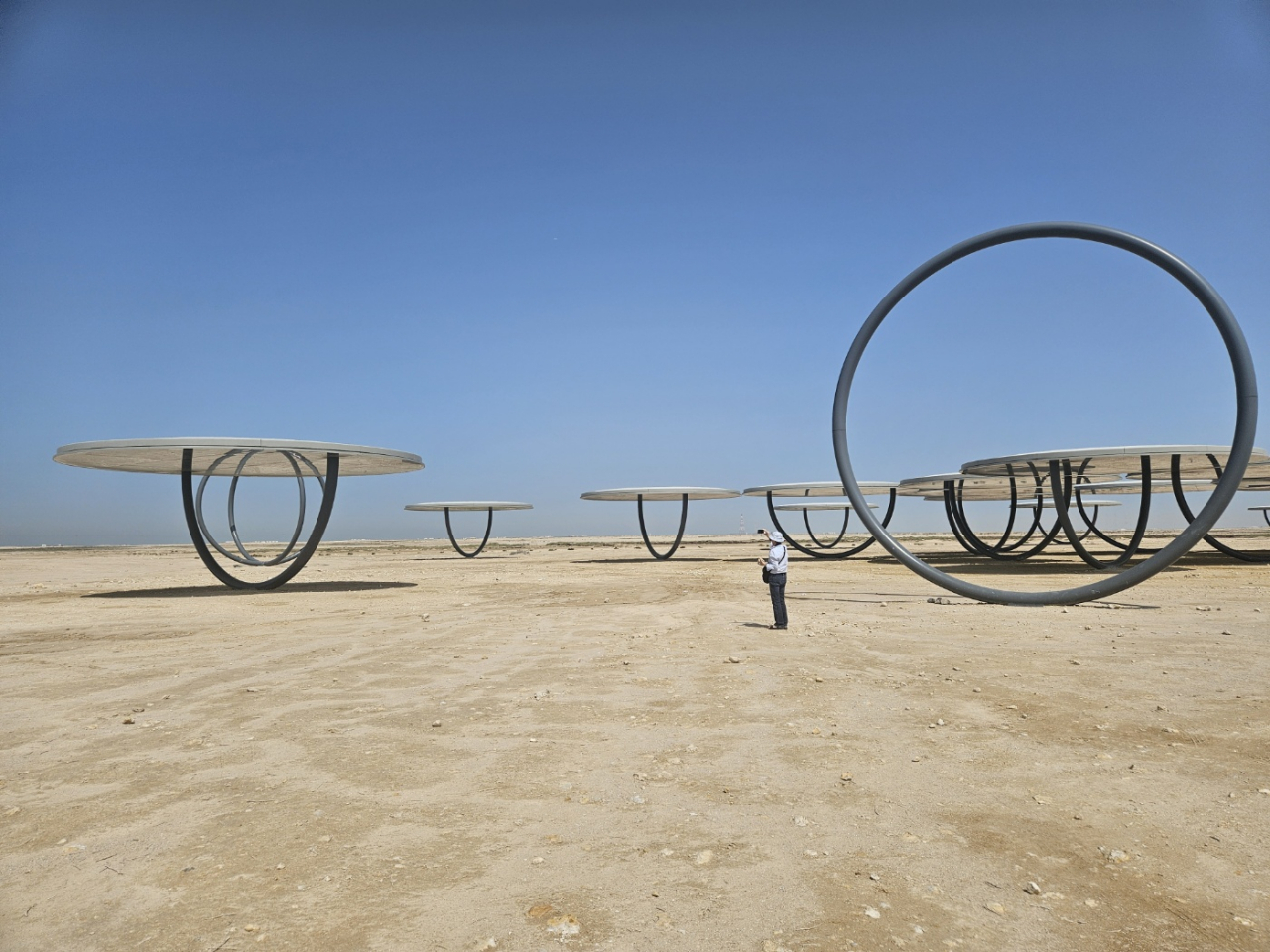
“It is our responsibility to create environments for our children to be nurtured and supported on their own life journeys. My personal mission remains to globalize the local and localize the global for my children. The current generation requires us to have open conversations about their hopes and fears,” al-Mayassa bint Hamad Bin Khalifa Al-Thani wrote in “The Power of Culture.”
One of the newest museums in the country is the 3-2-1 Qatar Olympic and Sports Museum, which opened in 2022 at the Khalifa International Stadium, one of the sites that hosted the FIFA World Cup Qatar 2022. The museum comprises approximately 19,000 square meters, housing hundreds of objects from around the globe, spanning the origins of sports to the modern day.
Qatar is planning to establish more museums in the near future -- The Dadu, Children's Museum of Qatar in 2026 and the Lusail Museum in 2029 on the northern edge of Doha --which will house an extensive collection of Orientalist paintings, drawings and photographic pieces.



















![[Today’s K-pop] Treasure to publish magazine for debut anniversary](http://res.heraldm.com/phpwas/restmb_idxmake.php?idx=642&simg=/content/image/2024/07/26/20240726050551_0.jpg&u=)